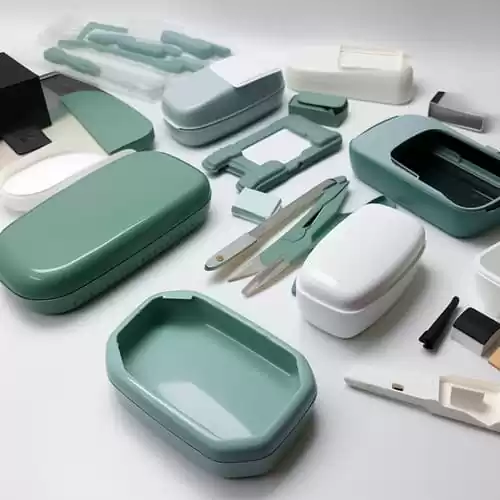Introduction
Vacuum forming is a widely used manufacturing process that plays a significant role in creating a diverse range of products, from everyday items like food containers to complex components for automotive and industrial applications. This versatile technique is favored for its cost-effectiveness and ability to produce both large-scale and small-scale productions. In this introduction, we will define vacuum forming and highlight its importance in modern manufacturing. Additionally, we will provide a concise overview of the vacuum forming process.

Definition of Vacuum Forming: Vacuum forming, also known as thermoforming, is a plastic molding process in which a heated thermoplastic sheet is shaped over a mold using vacuum pressure. The vacuum pressure draws the heated sheet tightly against the mold, creating the desired shape. This process is suitable for various materials, including ABS, PETG, polycarbonate, and more, making it highly adaptable to different manufacturing requirements.
II. The Basics of Vacuum Forming
Vacuum forming is a widely used manufacturing process that involves shaping a heated plastic sheet over a mold to create a variety of products. In this section, we will explore the fundamental components of the vacuum forming process and how they contribute to the production of high-quality plastic parts.
A. Plastic Sheet
Thermoplastic sheets are the raw materials used in vacuum forming. These sheets are made from various plastic materials, including Acrylonitrile Butadiene Styrene (ABS), Polyethylene Terephthalate Glycol (PETG), Polycarbonate, and more. The choice of material depends on the desired properties of the final product, such as rigidity, transparency, or resistance to impact and chemicals.
During the vacuum forming process, the plastic sheet is first heated in an oven or heating chamber. The heating softens the sheet, making it pliable and easily deformable. The optimal temperature and heating duration vary based on the plastic material's specifications.

B. Molding Process
Once the plastic sheet reaches the appropriate temperature, it is transferred to a forming station. The forming station consists of a mold, which can be either a male or female mold, depending on the product's design requirements.
Male Mold:
A male mold, also known as a "positive mold," has a shape that replicates the exterior surface of the desired product. When using a male mold, the plastic sheet is placed over the mold, and a vacuum or pressure is applied from beneath the mold. The vacuum draws the heated sheet tightly against the mold's surface, shaping the plastic to match the mold's contours. This process is ideal for creating products with intricate external detailing and complex geometries.
Female Mold:
Conversely, a female mold, also known as a "negative mold," captures the interior surface of the desired product. With a female mold, the heated plastic sheet is placed inside the mold, and the vacuum is applied above the top sheet surface, pulling it downward into the mold's cavity. The female mold is suitable for products that require consistent material distribution and uniform wall thickness. It is commonly used for items like food containers and trays.
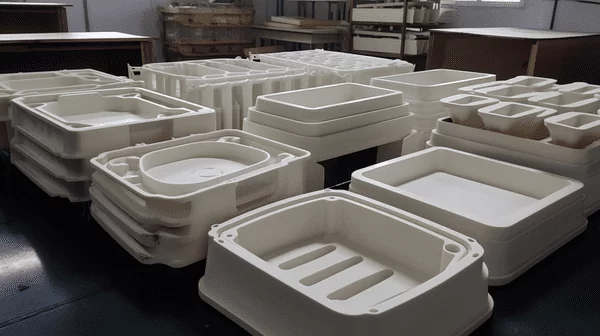
C. Vacuum Pump
The vacuum pump plays a vital role in the vacuum forming process. As the heated plastic sheet is placed over the mold, the vacuum pump removes all the air trapped between the sheet and the mold's surface. By eliminating the air, the atmospheric pressure forces the sheet to conform to the mold's shape, creating the desired form.
The vacuum pump is responsible for achieving precise and accurate molding results. It ensures that the plastic sheet adheres tightly to the mold, minimizing defects and enhancing the final product's quality. The vacuum level and duration can be adjusted based on the complexity of the product and the specific plastic material being used.
D. Cooling Process
Once the plastic sheet has taken the shape of the mold and the desired form has been achieved, the next step is the cooling process. Cooling is essential to solidify the formed part and maintain its shape after demolding.
There are various cooling methods used in vacuum forming, such as ambient air cooling, water cooling, or using chilled air or water to expedite the cooling and pressure forming process. The method chosen depends on factors like the plastic material's cooling rate and the required cycle time for production.
After the cooling process, the formed part is removed from the mold, and the vacuum forming process for that specific product is complete.

In conclusion, understanding the basics of vacuum forming, including the use of thermoplastic sheets, the molding process with male and female molds, the role of the vacuum pump, and the cooling process, is essential for manufacturers to utilize this versatile and cost-effective manufacturing technique effectively. The precise combination of these components ensures the production of high-quality plastic products in various industries and applications.
III. Male and Female Tooling in Vacuum Forming
Vacuum forming employs two primary types of tooling: male and female molds. Each type has distinct characteristics and serves specific purposes in the manufacturing process. In this section, we will explore the features of male and female molds and highlight the applications and examples of products created using each.
A. Male Mold
1.Definition and Characteristics of a Male Mold:
A male mold, also known as a "positive mold," is designed to replicate the exterior surface of the desired product.
It features a cavity that mirrors the final shape of the product.
The male mold is typically used when the primary focus is on the product's outer appearance and intricate detailing.
2.Applications and Examples of Products Made Using Male Molds:
Plastic Boxes:
Male molds are commonly used to create plastic boxes, such as storage containers, toolboxes, and electronic enclosures. These products often require precise exterior detailing and custom shapes for optimal functionality.

Machine Parts:
Many machine components and housings are produced using male molds. These parts may have complex geometries and require accurate reproduction of external features for seamless integration into machinery.
Household Items:
Various household items, such as cosmetic cases, kitchen utensil holders, and stationery organizers, are manufactured using male molds to achieve appealing designs and practical functionalities.
Light Diffusers:
Male molds are instrumental in forming light diffusers for various lighting fixtures. These diffusers can be tailored to scatter light effectively, enhancing illumination and aesthetics.
B. Female Mold
1.Definition and Characteristics of a Female Mold:
A female mold, also known as a "negative mold," captures the interior surface of the desired product.
It has a shape that corresponds to the negative space inside the product.
The female mold is preferred when achieving consistent material thickness and improving material distribution is crucial.
2.Applications and Examples of Products Made Using Female Molds:
Food Storage Containers: Female molds are widely used in producing food storage containers and disposable food packaging. The focus is on creating a consistent wall thickness to ensure product durability and food preservation.
Vehicle Parts: Automotive industry applications, such as interior components like dashboards and door panels, often involve female molds. These parts require precise material distribution to meet safety and performance standards.
Medical Trays: Female molds are employed to manufacture medical trays for storing and organizing medical equipment, vials, and instruments. The trays must have uniform thickness for secure and organized storage.
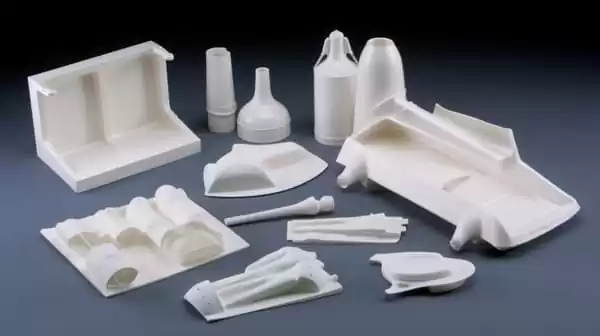
Electronics Enclosures: Products like electronic device enclosures and casings often use female molds to achieve consistent wall thickness and proper fit for internal electronic components.
By understanding the characteristics and applications of male and female molds, manufacturers can make informed decisions in selecting the appropriate tooling for specific products. In the next section, we will delve deeper into the advantages of using male and female molds in vacuum forming and their significance in the production of high-quality plastic products.
IV. The Difference Between Male and Female Molds
In vacuum forming, the choice between using a male or female mold significantly impacts the final product's design, quality, and production efficiency. Each type of mold offers distinct advantages and benefits, catering to different manufacturing requirements. In this section, we will explore the differences between male and female molds, along with their respective advantages and suitable product applications.

A. Male Mold
1.Advantages and Benefits of Using a Male Mold:
Fine Detailing: Male molds are excellent for producing products with intricate external detailing and complex geometries. The mold's surface directly reflects the desired product's exterior, resulting in precise replication of design features.
Minimal Undercuts: Undercuts, which can complicate the product's removal from the mold, are generally less of a concern with male molds. This simplifies the demolding process and ensures smooth production.
Versatile Materials: Male molds accommodate a wide range of plastic materials, making them adaptable to various product applications and material requirements.
Prototyping and Low to Medium Production Runs: Male molds are well-suited for rapid prototyping and small to medium production runs, as they offer lower tooling costs compared to other molding processes like injection molding.
Ideal for External Aesthetics: Products that require a visually appealing outer surface, such as decorative items and product casings, benefit from the precision and detailing offered by male molds.
2.Suitable Products for Male Molds:
Plastic boxes and enclosures with intricate designs and surface detailing.
Decorative items, display stands, and signage boards.
Customized machine components and housings.
Protective covers and panels for electronic devices.
Artistic and creative products with complex shapes.
B. Female Mold
1.Advantages and Benefits of Using a Female Mold:
Consistent Material Distribution: Female molds are ideal for achieving consistent wall thickness and material distribution throughout the product. This ensures structural integrity and uniformity in mechanical properties.
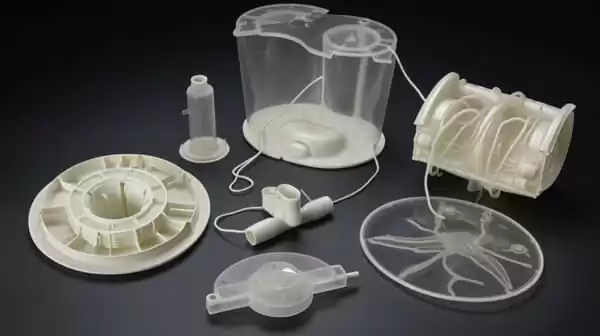
Draft Angles and Easy Demolding: Products with draft angles or sloped features, such as food containers and trays, can be easily demolded from female molds, simplifying the production process.
Mass Production and Large Production Runs: Female molds are suitable for high-volume production, making them advantageous for industries that require mass production of products.
Cost-Effective and Lower Tooling Costs: For large production runs, female molds offer lower tooling costs compared to other molding methods, making them economically viable for high-demand products.
Interior Design Focus: Products that prioritize interior functionality and consistent wall thickness, like medical trays and vehicle components, benefit from the precise material distribution provided by female molds.
2.Suitable Products for Female Molds:
Food storage containers and packaging for consistent material thickness.
Medical trays and equipment holders for organized storage.
Automotive interior components like dashboards and door panels.
High-volume production of disposable products.
Industrial components requiring uniform material distribution.
Understanding the advantages and suitable applications of male and female molds enables manufacturers to optimize the vacuum forming process based on their product requirements. In the next section, we will explore the broader applications and use cases of vacuum forming and how it benefits various industries and product sectors.
V. Advantages of Male and Female Molds in Vacuum Forming process
In the vacuum forming process, both male and female molds offer unique advantages and strengths that cater to specific product requirements and manufacturing needs. Understanding these advantages is crucial for manufacturers to make informed decisions in selecting the appropriate mold type for their projects. In this section, we will delve into the detailed advantages and strengths of using male and female molds in vacuum forming.
A. Male Molds
1.Fine Detailing and Complex Geometries: One of the primary advantages of using male molds is their ability to produce products with intricate external detailing and complex geometries. The mold's surface directly reflects the desired product's exterior, resulting in precise replication of design features. This is particularly beneficial for items requiring decorative elements, intricate patterns, or artistic designs.
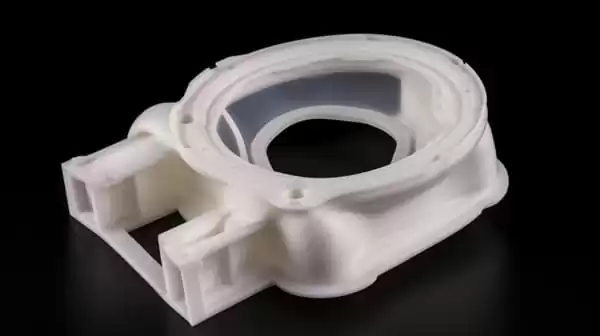
2.Minimal Undercuts and Easy Demolding: Male molds typically have fewer undercuts compared to female molds. Undercuts refer to indentations or protrusions that could complicate the product's removal from the mold. With male molds, the demolding process is generally smoother and more straightforward than female tool.
3.Versatility in Material Selection: Male molds accommodate a wide range of plastic materials, making them adaptable to various product applications and material requirements. This versatility allows manufacturers to choose the most suitable material for the product's intended use, such as impact-resistant materials for protective covers or transparent materials for display cases.
4.Rapid Prototyping and Low to Medium Production Runs: Male molds are well-suited for rapid prototyping and small to medium production runs due to their relatively lower tooling costs compared to other molding processes like injection moulding. This makes them an economical option for producing limited quantities of specialized items.
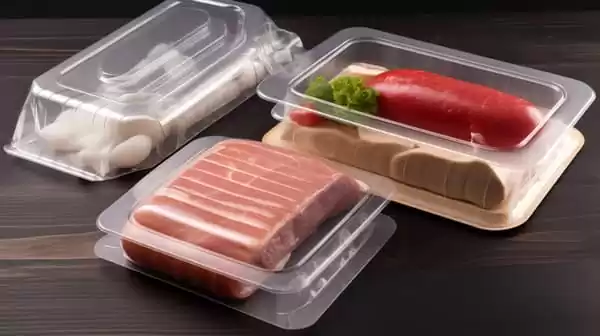
5.Ideal for External Aesthetics: Products that require a visually appealing outer surface, such as decorative items, product casings, and custom-designed packaging, benefit from the precision and detailing offered by male molds. The ability to replicate intricate designs accurately enhances the overall aesthetics of the final product.
B. Female Molds
1.Consistent Material Distribution and Wall Thickness: One of the primary strengths of using female molds is achieving consistent wall thickness and material distribution throughout the product. This ensures structural integrity and uniformity in mechanical properties, critical for items that require reliable performance and durability.

2.Draft Angles and Easy Demolding: Female molds are advantageous for products with draft angles or sloped features. The draft angle allows for easy demolding from the mold surface, simplifying the production process and reducing the risk of product deformation during removal.
3.Mass Production and Lower Tooling Costs: Female molds are particularly suitable for high-volume production runs. For large-scale manufacturing, using female molds can be more cost-effective due to their ability to produce multiple products simultaneously, reducing per-unit production costs.
4.Interior Design Focus and Product Consistency: Products that prioritize interior functionality, such as medical trays and equipment holders, benefit from the precise material distribution provided by female molds. Consistent material thickness ensures uniformity and functionality in these applications.
5.Suitable for Disposable and High-Demand Products: Female molds are often used in producing disposable items, where consistent material distribution and cost-effectiveness are essential. Additionally, female molds are well-suited for industries with high-demand products, such as food packaging and medical supplies.
By recognizing the specific advantages and strengths of male and female molds, manufacturers can optimize their vacuum forming process to produce high-quality products efficiently and cost-effectively. In the following section, we will explore real-world applications and use cases of vacuum forming across various industries and sectors.
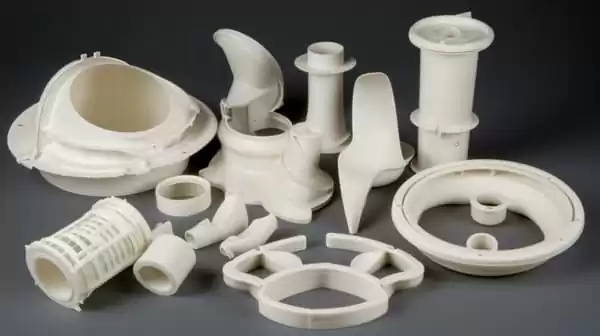
Conclusion
In conclusion, male and female molds play crucial roles in the vacuum forming process, offering distinct advantages and catering to specific manufacturing needs. Throughout this article, we have explored the significance of vacuum forming in modern manufacturing and provided a concise overview of the vacuum forming process.
Recap of the Importance of Male and Female Molds in Vacuum Forming: Male molds, also known as "positive molds," excel in producing products with intricate external detailing and complex geometries. They are ideal for items that require fine aesthetics and precise replication of design features. On the other hand, female molds, or "negative molds," prioritize consistent material distribution and wall thickness, ensuring structural integrity and uniform mechanical properties. They are well-suited for mass production and items with draft angles for easy demolding.
Summary of Their Respective Advantages and Use Cases: Male molds offer advantages such as fine detailing, minimal undercuts, material versatility, and suitability for rapid prototyping and low to medium production runs. They are suitable for products with intricate external features, including decorative items, machine parts, and custom-designed packaging. Female molds, on the other hand, provide advantages like consistent material distribution, easy demolding with draft angles, mass production capabilities, and cost-effectiveness for high-demand products. They are commonly used for food storage containers, medical trays, automotive components, and disposable items.
How Understanding the Difference Between Male and Female Molds Helps Manufacturers: Understanding the characteristics and applications of male and female molds empowers manufacturers to make informed decisions in selecting the appropriate tooling for their projects. By choosing the right mold type, manufacturers can optimize the vacuum forming process to meet specific product requirements, achieve consistent quality, and enhance production efficiency. Whether prioritizing exterior aesthetics or interior functionality, the choice between male and female molds significantly impacts the final product's design and performance.
In conclusion, vacuum forming, with its male and female molds, is a cost-effective and versatile manufacturing process that caters to a wide range of products across various industries. The advantages of each mold type, along with their respective applications, ensure that manufacturers can create high-quality plastic products efficiently and economically. By following this comprehensive guide, readers can gain valuable insights into the world of vacuum forming, enabling them to make informed decisions and optimize their production processes for successful and innovative outcomes.
With this article, we hope to have shed light on the significance of male and female molds in the vacuum forming process, paving the way for manufacturers to embrace this versatile manufacturing technique with confidence and achieve remarkable results in their respective industries.

